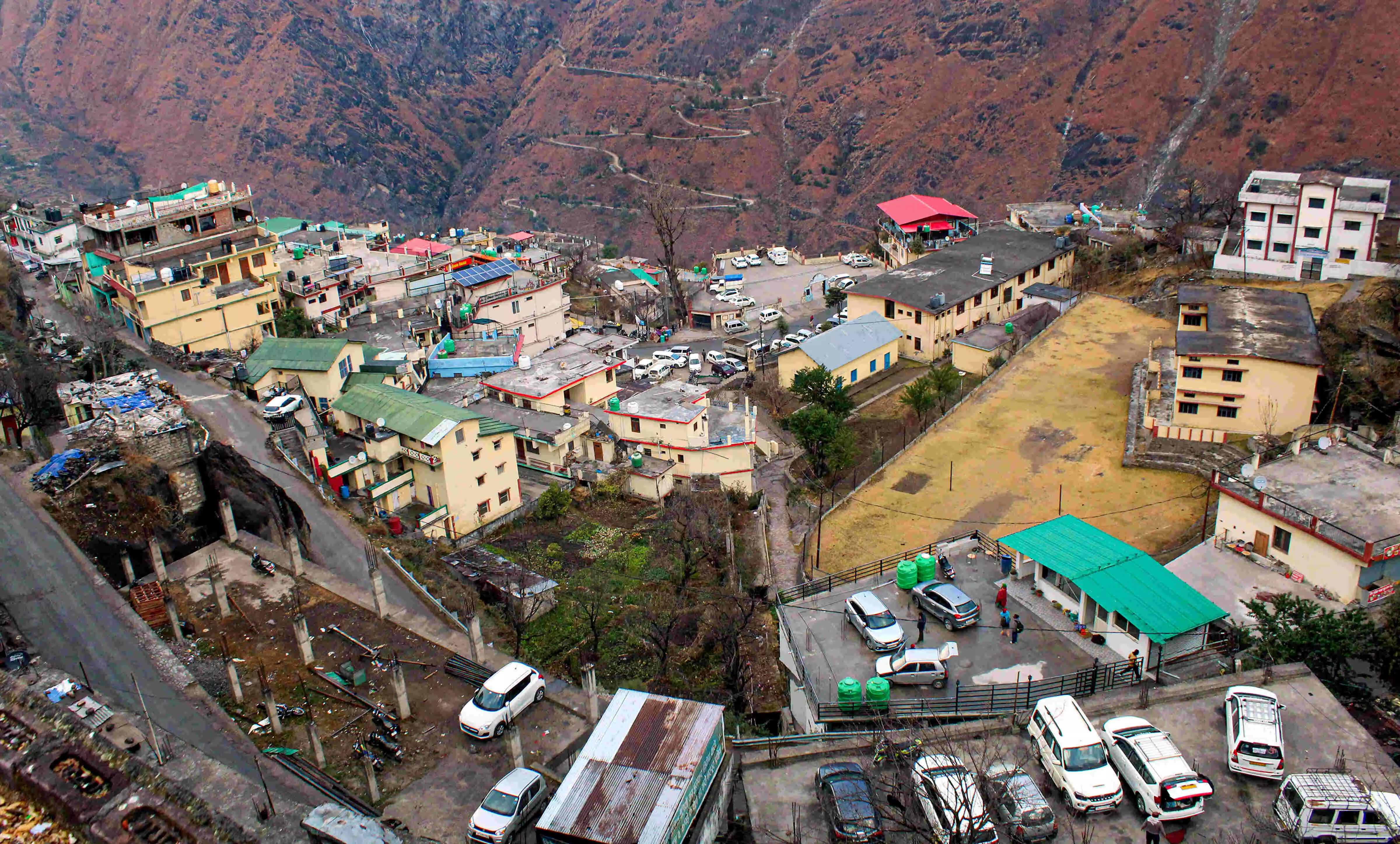No margin for error

Over a week has passed since the Joshimath crisis started unfolding. A chain of possible lapses has come to the fore in the meantime, that clearly indicates the involvement of the human hand at not one, but multiple points. It is when the properties are destroyed and lives are at risk that we humans have found the time for contemplating what went wrong in Joshimath. While this retrospective contemplation might not help in averting the crisis, it possibly can pave the way for prospective planning to prevent some more that may be waiting in the wings. Multiple theories, based on facts and conjectures, are floated around the causes of the land subsidence — or vertical sinking of land — in the town. In the first place, there was a fault in the foundation itself. The town is learnt to have been built on the remains of landslides and moraine — a material left behind by retreating glaciers. The town is also reported to have a faulty drainage system which might have led to the percolation of water, resulting in the weakening of rocks. These flaws surround the inherent geological limitations of the town in particular and the state in general. Situated at a high altitude of around 2,000 meter above the sea level, seismically vulnerable Joshimath is trapped between Dhauliganga and Alaknanda rivers in the Himalayan range. As if these vulnerabilities were not enough, the area in and around the town witnessed almost unhindered heavy construction. NTPC’s 500 MW Tapovan-Vishnugad Project has, in particular, attracted widespread public ire, and not without reason. The project entails tunnelling of water from the Dhauliganga river to generate electricity. Apart from the ecological burden of the project on the region, experts have also questioned the possible role of a 2009 aquifer puncture made by NTPC that might have led to gradual water percolation in the underneath surface. It is true that these are still just theories. Their exact role, if any, can be traced only after a detailed scientific investigation, but the ecological viability of such projects in the vulnerable region is certainly something that needs to be pondered upon. The Char Dham road project, which also entails widening the road to Badrinath, and Helang bypass have also come under the radar. While the mention of these cases may seem particular, it reflects a general mentality vis-à-vis balancing ecological concerns and developmental aspirations. They also reflect an ignorant, insensitive undermining of climate risks in exchange for short-term profits. It won’t at all be an exaggeration to say that the land subsidence in Joshimath is a crisis that was waiting to happen, and was allowed to do so, by successive governments. What is being unfolded in Joshimath was foreseen more than four decades ago by a committee report whose recommendations have been tossed aside in the most reckless and blatant manner. The 18-member committee, headed by Garhwal Collector MC Mishra, said in most clear terms that the area was “not suitable for a township” and that “vibrations produced by blasting, heavy traffic, etc.” could lead to disequilibrium. Even if the committee report were to be considered a thing of the past, then more recently, the Geological Survey of India and the Uttarakhand State Disaster Management Authority (USDMA), too, issued warnings about massive construction. As reported by Third Pole, a delegation of Joshimath residents “managed to get five minutes with the Chief Minister” in Dehradun regarding the developing cracks in their homes. Customary compensations and assurances, along with unavoidable relief and rehabilitation work, are making rounds in the news. On January 10, scientists from the Council of Scientific and Industrial Research-National Geophysical Research Institute initiated an examination of the situation in Uttarakhand. One remains doubtful about the effectiveness of the otherwise imperative exercise, because of the general tendency to ignore the red flags. The need for retrospection and course correction at this juncture is more urgent than it appears. Apart from minimising the impact of such phenomena in the mid-term, a more immediate crisis might be waiting in the wings as seasonal precipitation is yet to follow in the state, which may deteriorate the situation further. People need to be rehabilitated urgently. Of course, the crisis also leaves a lot of scope for contemplating mid- and long-term approaches to development, not just in Joshimath or Uttarakhand but in numerous vulnerable spots in the country. Nature, it seems, has now become unforgiving — leaving a little margin for error.



